Famous Photographers - Part 20 - Matika Lorraine Wilbur
By: Kavika and Buzz of the Orient
BUZZ NOTE: This is a copy of an article posted by Kavika and me five years ago, and is relevant as a backup for Kavika's present article about Matika Wilbur. Below the article itself are the original comments from 5 years ago.

Famous Photographers - Part 20 - Matika Lorraine Wilbur
(Brought to you by the notorious collaborating team of Kavika and Buzz)

There has been considerable interest in the Famous Photographers series upon which Kavika and I have collaborated to bring you visual and textual knowledge of America's indigenous people. We are encouraged by the great response to our photo-essays about Robert Reed and Zoe Marieh Urness, and we intend to continue with those efforts. Today we introduce you to Matika Wilbur, a teacher, lecturer and photographer whose works have been exhibited and lectures delivered in many venues including universities across America.
From Wikipedia:
Matika Lorraine Wilbur is a member of the Swinomish and Tulalip tribes of the State of Washington where she was raised in a family of commercial fishermen. Before focusing on photography as a tool for social justice, Matika received her teaching certification and worked in primary education at The Tulalip Heritage High School for 5 years. There, she experienced firsthand the lack of educational resources to teach indigenous intelligence and [was] dismayed that the curriculum being taught did not provide Native youths with positive imagery and understanding. Thus began the momentum behind "Project 562".
[ Buzz Note: Those who think that Native Americans are vintage people who are "leathered and feathered" need to be updated to the contemporary reality. At the time of the inception of "Project 562" there were 562 Indian Tribes recognized by the federal government. Kavika has informed me that there are now 567.]
Wilbur's three initial photographic projects include "We Are One People", a photograph collection of Coast Salish elders; "We Emerge", a photograph collection of Native people in contemporary settings, and "Save the Indian and Kill the Man", a collection of Native youth expressing their identities. Her other work includes "iHuman", presenting images interwoven with cedar bark. The artist specializes in hand-tinted, black-and-white silver gelatin prints. She plans on publishing a book about her photography.
"Project 562" is Wilbur's fourth major project to document contemporary Indigenous peoples. She began traveling throughout the US in November 2012 with the goal of photographing members all US tribes on their tribal lands. She has traveled 250,000 miles documenting indigenous people.
More about Matika's work and Project 562 can be learned by watching her speak about them on this Kickstarter video. Although it requests donations for her cause, our posting it is NOT a request by Kavika and myself that you donate or have any obligation to do so unless it is a cause that you particularly want and choose to support.
Wilbur's photographs are mostly black and white. She shoots on a Canon EOS 7D digital, and a Mamiya medium format reflex film camera (as seen in her photo above), which is modeled on the venerable and iconic Hasselblad camera. As I am an amateur photographer, I take interest in the fact that Matika uses both a modern digital and a film camera. I assume she shoots her colour shots with the digital Canon and I noticed in the video she loads her Mamiya camera with black and white ILFORD film. You will see many photos where the background is black and white, while the subject has been hand-tinted by her, an uncommon process which she does skillfully.
As we have done in previous photo-essays, here are 55 photographs taken by Matika Wilbur, with commentary by Kavika ( in GREEN ):
1. Robert and Fannie Mitchell. They have been married for 65 years. Dine (Navajo) Tribe couple. The Navajo reservation is the largest in the U.S., located in an area noted as the "Four Corners". It is the only place in the U.S. where four states come together. The Navajo reservation is located in Arizona, Utah, New Mexico and bordering Colorado.

2. Dark Feather, Bibiana and Eckos Aniheta. Tulalip Tribe, located in Western Washington State and is comprised of the Duwamish (Chief Seattle), Snohomish, Snoqualmie, Skagit, Suiattle, Samish and Stillaguamish peoples.

3. Steven Yellowtail Industrial Engineering Student of the Crow Nation, at his family's Cattle Ranch in Montana. The Crow Tribe of Montana is one of several major tribes located in Montana. The Crow people acted as scouts for the U.S. Cavalry from time to time - one time being for Custer at the Battle of Greasy Grass (Little Big Horn).

4. Caleb and Jared Dunlap - a/k/a "The Twindians" Anishinaabe Tribe, Minnesota - The Anishinaabe is the correct name for what are known today as Ojibwe (French word) or Chippewa (British word). Anishinaabe translates to "The First or Original People", located in northern Minnesota. The photo was taken either at Red Lake, Leech Lake, White Earth or Bois de Fort.

5. Chief Bill James Lummi Nation - The Lummi Nation is located in western Washington State and are correctly known as the Lhaq'temish (People of the Sea).

6. Bahazhoni Tso The young Navajo girl is in traditional dress. The photo was taken somewhere in the "Four Corners" area of the U.S.

7. Dr. Mary Evelyn Belgrade Pueblo of Isleta and Ohkay Owingeh, New Mexico. The Pueblo people live mostly in New Mexico and Arizona. They are believed to be the descendants of the Mogollon, Hohokam and ancient Puebloans (Anasazi) peoples. Their stunning pottery, both ancient and modern, is in demand worldwide.

8. Although no information was available for this photo, the regalia/dress appears to be that of a Pacific northwest coastal tribe.

9. Again no information, but the young woman is holding corn and shown against a backdrop of Seattle, Washington.

10. Most likely a member of a Pacific northwest coastal tribe. Buzz Note: I was particularly taken by this photo as it immediately brought to my mind Alfred Lord Tennyson's poem "The Lady of Shalott".

11. Rosebud Quintana Northern Ute and Dine Tribe. The photo was taken in the Four Corners area.

12. Another photo of Rosebud Quintana.

13. Rupert Steele Goshute people. The Goshute reservation straddles the Utah and Nevada border. It is one of the two Goshute reservations, the other being in Skull Valley. They are a very hardy people who have lived in the western deserts for centuries. They were mentioned by Mark Twain (although not in a good way).

14. Jaclyn Roessel Dine, Navajo Nation. The ring she shows on her hand is typical of Navajo jewelry. They are famous for their jewelry, much of it made with Turquoise.

15. No information is available for this photo.

16. Hannah Tomeo Colville, Yakima, Nez Perce, Sioux and Samoa Nations - The Colville Tribe is made up of 12 groups/tribes: Chelan, Chief Joseph Band of Nez Perce, Colville, Eniat, Lakes, Methow, Moses-Columbia, Nespelem, Okanagan, Palus, An Poli and Wanatchi. They are located in central Washington State.

17. Isabella and Alyssa Klain The two Navajo (Dine) girls in traditional dress telling all that "We are still here".

18. Juanita Toledo Juanita Toledo is of the Jemez Pueblo. With a tribal membership of 3,400 most reside in the Pueblo Walatowa, meaning "This is the place". It is a sovereign nation with its own government and tribal court system, with a Pueblo history of battling the Spanish invasion for decades.

19. Sharyce Parker and her grandmother Jennie Parker They are of the Northern Cheyenne. This is the native nation that the ''Dog Soldiers'' warrior society comes from.''

20. Martin Sensmeier Koyukon Athabascan and Tlingit (the previous Famous Photographer of this series, Zoe Marieh Urness, was also Tlingit). He was born in Alaska and is an actor and model. Among his film/TV credits are The Magnificent Seven (2016), Westworld (TV series), Wind River, Beyond the Sky, and The Chickasaw Rancher.

21. Marva Scott Tolowa Tribe. The Tolowa Indians' traditional range was northwest California north to mid-Oregon coastal regions. Currently they are located in Del Norte County, CA, and the Silitz reservation in Oregon. In the early 1920s there were only 120 Tolowas left, but currently the tribe numbers 1,000.

22. Guylish Bommelyn Tolowa Tribe, Smith River Rancheria

23. Loren Bommelyn Tolowa Tribe

24. Sage Romero Big Pine Paiute Tribe of Nevada. Hoop Dancer - The hoop is the most significant part of the dance and it has deeper symbolic meaning than meets the eye. For most Native Americans the hoop simply represents the never-ending circle of life. It has no end or beginning and reminds one that we, as nations, are all connected. Kevin Locke, a nationally recognized Lakota hoop dancer, explains the hoop as this: "The hoop or circle is the most pervasive and ubiquitous world archetype. For all people the shape represents peace, wholeness, harmony, beauty, sacredness, divinity, continuity, infinity, and well-being. So as described, not only is the hoop a powerful representation for Native Americans, but the circle itself has deep meaning for them as well. The circle is continuously seen throughout their culture. It is the way the powwow is formed, it is the floor formations they make while dancing, and it is in the direction they move. They believe that when they are dancing the hoop dance, they are honoring the circle and paying respect towards its sacredness."
It is believed that the Anishinaabe were the first to use the Hoop Dance. In the 1920s it was revived by the Pueblo people of the southwest. Today it can be seen at most powwows and is often used at shows that feature Native American dances.
A Hoop Dance known as the "Ghost Dance" originated with the Paiute Tribe and eventually led to the "Massacre at Wounded Knee".

25. Hoop Dancers

26. Talon and Sky Duncan Members of the Mandan, Hidatsa and Arikara Tribe of North Dakota and the San Carlos Apache of Arizona.

27. Gloria Grant (Christiana Means) Educator, Artist, Rodeo performer and the wife of Russell Means, Indian activist and actor. She is Navajo (Dine) and Omaha. The photo was taken at the Four Corners in New Mexico.

28. Star Flower Montoya Taos Pueblo and Diguano. Taos Pueblo is the oldest continuously inhabited community in the U.S. - over 1,000 years old. Star Flower is also Diguano which is a Spanish word. In reality she is part of the Kumeyaay people of southern California.

29. Although this photo appears to have been taken in the southwest U.S., the vest she is wearing is actually of the Anishinaabe people.

30. White Mountain Apache Crown Dancer representatives of the Mountain people appear among the Apache Indian people in masked form and are called the Crown Dancers. Apache Indians tell many stories of the Mountain Spirits, usually attesting to their power to cure and protect, or to the ill consequences of showing disrespect for the Mountain Spirits.

31. White Mountain Apache Crown Dancers

32. To me this is one of the most striking photos in this photo-essay. The look and stance he has taken says one thing to me: "We are still here." This is an expression among Indians that no matter what has happened to us, we will survive and thrive.

33. Jane Blackman Pala Band of Mission Indians. The photo shows her in a church. Many Indians practice a combination of Christian religion mixed with their tribal beliefs (Native American Church) while others practice their original religion which predates the Europeans' arrival by thousands of years.
The Pala Band of Mission Indians is located in southern California near Fallbrook. Members of the Pala Band belong to the Kuupangaxwichem, or Cupeno, and Luiseno tribes. The Pala reservation represents one of the communities of Indians who were forced together by Spanish Franciscan missionaries during the 1800s. Although descendants of the Cupeno people form the majority, there has been a large degree of cultural integration between the groups.

34. Tatanka Means Award-winning actor, comedian and motivational speaker. Tatanka represents the Navajo, Oglala Lakota and Omaha nations. His mother, Gloria Means, is shown in photo 23, His father, Russell Means, is a Native American activist, actor and writer.

35. Hayes Lewis Zuni. He is the perfect depiction of the Zuni people - modern clothing and look yet the Zuni people live a life very closed to the western world. Their tribal name is A'shiwi (Shi'wi), meaning "the flesh". The name "Zuni" was a Spanish adaptation of a word of unknown meaning. The Zuni speak their own unique language which is unrelated to the languages of the other Pueblo peoples and continue to practice their traditional shamanistic religion with its regular ceremonies, dances and mythology.

36. Melba Appawara Northern Ute Tribe This is a great photo of a tribal elder. Wisdom from experience is written all over her face. The Northern Ute Tribe is located in north-east Utah and are part of the Great Basin tribes that dominated the area for centuries.

37. Sinead Talley Karuk and Yarok - both tribes are located in northern California. The Karuk is one of the largest tribes in California and their name "Karuk" translates to "upriver people", the river being the Klamath River in northern California. The "Yarok" name translates to "downriver people" and that would be the Klamath River and the coast.

38. Wahatalihate (He Made it Warm) Daniel Clay Stevens Oneida - Daniel represents a long line of patriots. The Oneida people are known as the "First Allies" of the fledgling U.S. Polly Cooper and the Oneida people came to General George Washington's rescue at Valley Forge. (link): http://www.oneidaindiannation.com/polly-cooper-oneida-heroine/

39. Ailee Tregoso Cheyenne River Sioux - the Cheyenne River Sioux are located in South Dakota. Ailee Tregoso looks like she is ready to take part in the "Fancy Shawl Dance" for women.

40. A Native elder of the Pacific northwest

41. Indian cowboy in the desert

42. Oneida youth in a "Longhouse"

43. Native people of the Pacific northwest

44. Stephen Small Salmon Salish, Kootenai people in northeastern Montana

45. Walk the Red Road What "Walk the Red Road" means to Native Americans is as follows: "The Red Road" or "The Red Path" is the Native spiritual path. Walking the Red Road means living in the moment connected to all that surrounds us, respecting all of our relations and Mother Earth and Father Sky. It means finding a balance between and attending to our four sides: spiritual, physical, mental and emotional. It means taking care and respecting ourselves and the Creator. It means being thankful for what we have, to only take what we need and to give back. To give back to those around us and to the spiritual world. And to remember where we have been, to remember and honor our ancestors. It is walking in the right path of life, where we do the right thing even if it's freaking hard at times.
Simply put, the Red Road is a road of respect, humbleness, truthfulness, spirituality. It is believing that there is a power higher and greater than us who has a path for us. Each step on our path will be shown to us in time. It certainly does not mean having to live a perfect life . We can fall and stumble on the Red Path, but we also get up and keep going. We discover ourselves as we walk and learn from mistakes we have made. We grow and evolve. But the goal is to live a balanced life 365 days of the year - to balance our commitments to our family, friends, community, work, spirituality and to ourselves.

46. Daygotleeyos "She Has Nice Eyes" Although the source indicated Wolf Clan, Oneida, that is not likely as her clothing is definitely Pueblo.

47. L. Frank Ajachmem and Tongva The Tongva live in southern California and prior to European contact the Tongva and Cumash were the most powerful indigenous tribes in southern California.

48. A young Lacrosse player. To natives Lacrosse is known as "The Creator's Game". As inventors of Lacrosse, Native Americans are among the best Lacrosse players in the world. The Iroquois Nationals compete at a world class level and with the U.S. and Canada teams, they are considered the best in the world.

49. From "We Are One People" (A photo-essay created by Matika Wilbur) Coast Salish Tribes. This photo speaks for itself and visually depicts that "we are one people".

50. JoRee White Clay La France From Montana

51. Nora Red Elk A "Navajo Walker" The Navajo Walkers were a group of Navajo (Dine) women who walked to protest fracking and also the DAPL (Dakota Access Pipe Line).

52. Desi and Kevin Lonebear celebrate their Cheyenne Wedding in Maui, Hawaii. There is a Native America powwow in Hilo, Hawaii (the Big Island) every December.

53. Kayah George and her mother Deborah Parker - Former Vice-Chairman of the Tulalip Tribe in Washington State. This and the next photo show the strength and beauty of Indigenous people.

54. This appears to be a photo of Kayah George, the daughter in the previous photo.

55. The Eagle Feather. It is a powerful symbol of all native people. Long before the Eagle became the symbol of the U.S. native people and the eagle were closely tied together. To many native people the Eagle is the messenger between humans on Earth and the "Great Mystery" (The Creator). The feather is awarded when acts of bravery or an act that is of great help to the tribe or native people is performed. To be awarded an eagle feather is the highest of honors to native people.

This is an amazing collection of portraits.
Original comments are now listed below
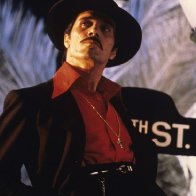
Indeed, it is an amazing collection of portraits.
Thank you Buzz for all the work that you put into this essay.

You did as much as I did, but I got the greater benefit, because for me it was an education about things you already knew about.
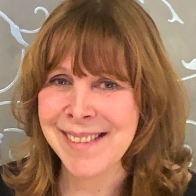
Truly a unique collection of photos. I enjoyed looking at the various different faces and the photographer's unique style of photography. Thanks so much for putting this together for us. It is something that makes me proud of NT.
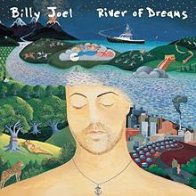
Stunningly beautiful 

Thank you, Buzz and Kavika! Beautiful photos! And thank you for explaining the photos and the Tribes and areas they are from. Also, Kavika, thank you for explaining the Red Road.

Incredible.
Which one stands out? They are all great.
This article deserves a few revisits. Maybe I can find a favorite, though 17 is very intriguing.
Thank you.

I know what you mean. Kavika and I had to decide on one we would use as the article photo - and neither of us could decide so I eventually used the excuse that if I posted a photo of a pretty girl maybe it would draw some interest. As for the photo that intrigues me the most, I indicated that already at photo number 10.
A painting by Walter Crane in 1862 inspired by Alfred Lord Tennyson's poem "The Lady of Shalott"


10 caught my eye as well. I wonder how she captured that photo?
Gotta catch some Zs. T have an on-site meeting in a few hours and probably won't be back until later tonight ET.

I would guess Matika was on a bridge. Sleep tight.

It's difficult for me to pick out one as my favorite. LOL I'm a fence sitter on this.
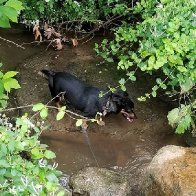
Wonderful collection.
I think my favorite is 37. She's very regal.
My roommate freshman year of college was from Taos, NM, and was Native American. She identified primarily with the Pueblo and Zuni people, but she said her mother was a member of the Apache tribe.

She is indeed very regal...I really like that photo.
I imagine that you had some interesting conversations with your roommate. She is decended from 3 very intresting tribes.

We did have interesting conversations. She was studying to follow in her grandmother's footsteps practicing traditional medicine. I got the feeling that she wasn't the most rewarding student her grandma could have had. I know for a fact that she skipped any class she thought she could get away with skipping 
We lost track of each other after she didn't return for sophomore year, and I haven't been able to find her since.
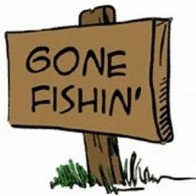
Beautiful collection and thank you for the narrative

Happy that you enjoyed it, Trout.
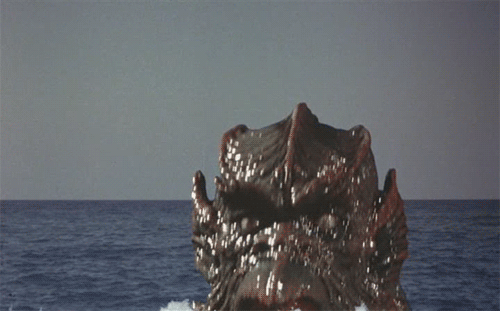
Great article. I love picture 8, the canoe pic and pic 54. Amazing!

Thanks BF. Each of the photos that you choose are excellent.

Those are the ones that particularly caught my eye as well, BF. They are ones that a photographer would choose because they are more than just portraits - there is greater creative composition involved than many of the others.
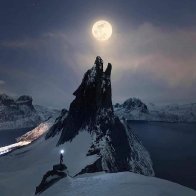
# 20 - mentions the film "Chickasaw Rancher". Finished in 2017 by the Chickasaw Nation - still hasn't hit the theaters, but is set for release "sometime" in 2019.
Absolutely beautiful photos and I luv the narration of our two best storytellers.

Thanks 1st...
The ''Chickasaw Rancher'' is one movie that I want to see. Looking forward to it's release.

I contributed very little to the narration, it was almost all Kavika, but I thank you anyway.

Wow.
WOW!
Talented photographer with great subjects....

A double WOW, and I agree Bob.

outstanding!

Thanks EG. I thought with your photo background you'd enjoy it.
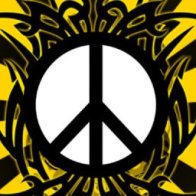
Great essay. Thanks guys.
I actually didn't know the origins of lacrosse. My brother played it. The way he played was kind of brutal.
Not to make light of it yet after reading about the hoop dancers, it made me think that a simple hoop/circle would make a nice tattoo.

Thanks Ender, Lacrosse is a rough game so your brother was right at home.
The ''Medicine Wheel'' of natives is a circle and with a very large story with many branches to the wheel.

"...it made me think that a simple hoop/circle would make a nice tattoo."
That is exactly what my daughter did on her shoulder, and at the time I flipped out, but now that I've mellowed with age I understand why she did, even though I have no appreciation for tattoos.

Thank You Kav
I will be sure to share these with Mrs. Personality to see if she agrees with my assessment about the resemblances to her mother
and herself. Not sure there are any pix of Great Grandmother who disappeared during the Great Depression.
Blessings for sharing this.

Thank you SP.
Happy that you enjoyed them and that Mrs. Personalty will have a chance to view them as well.
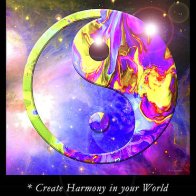
It's intriguing as to exactly the thought process of a photographer (or any graphic artist), in deciding which images are most effective in full color, somewhat desaturated color, or, as a tonal rendition. Instinct, intuition or just plain "feelings" often bring the artist to such decisions.
Ms. Wilbur clearly exploits what works best image-by-image.
Great post!

I thought Buzz intro and information about how she works with the cameras was excellent, Mac. It sure gave me a better understanding of her work and the work of others.
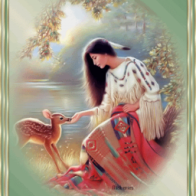
Thank you Buzz and Kavika for your wonderfully 'notorious' collaboration. (grin)
The photos are amazing, and allows us to see the various Tribes and their culture and regalia. I have to say that # 32 is my favorite. The photo alone says all that needs to be said about Native Americans across the country.
The photographers so aptly captured the real world life of the people of the various Tribes in their own environment. Putting it all together with the information for each one brings them to life.
Very well done, Buzz and Kavika! 

Thanks RW. 32 is a really wonderful photo. His expression/stance says it all...''We are still here''...


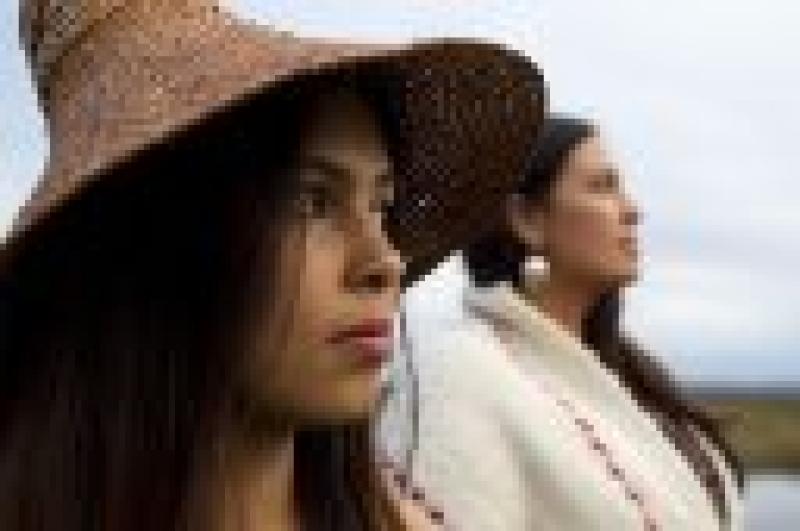
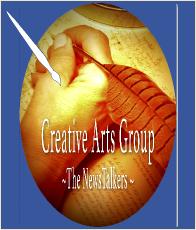

BUZZ NOTE: This is a copy of an article posted by Kavika and me five years ago, and is relevant as a backup for Kavika's present article about Matika Wilbur. Below the article itself are the original comments from 5 years ago.
Just fantastic.
One of the best collaborations we did.
She is outstanding!
It was the 20th of a series about famous photographers that were posted.
Will post a link to this article shortly.
Thank you.
Buzz,
Thanks for reposting these photos. I had totally forgotten about them. Matika Wilbur is truly a gifted photographer!
It was a bit of a chore using "fetch", and I realized later it might have been accomplished just by posting a new comment on the original article.